- Joined
- Oct 9, 2007
- Messages
- 47,774 (7.41/day)
- Location
- Dublin, Ireland
| System Name | RBMK-1000 |
|---|---|
| Processor | AMD Ryzen 7 5700G |
| Motherboard | Gigabyte B550 AORUS Elite V2 |
| Cooling | DeepCool Gammax L240 V2 |
| Memory | 2x 16GB DDR4-3200 |
| Video Card(s) | Galax RTX 4070 Ti EX |
| Storage | Samsung 990 1TB |
| Display(s) | BenQ 1440p 60 Hz 27-inch |
| Case | Corsair Carbide 100R |
| Audio Device(s) | ASUS SupremeFX S1220A |
| Power Supply | Cooler Master MWE Gold 650W |
| Mouse | ASUS ROG Strix Impact |
| Keyboard | Gamdias Hermes E2 |
| Software | Windows 11 Pro |
Intel Corporation today announced the availability of Thunderbolt technology, a new high-speed PC connection technology that brings together high-speed data transfer and high-definition (HD) display on to a single cable. Running at 10 Gbps, Thunderbolt technology can transfer a full-length HD movie in less than 30 seconds. This Intel-developed technology is coming to market through a technical collaboration with Apple, and is available first on Apple's new line of MacBook Pro laptop computers.
The vision for Thunderbolt technology (formerly codenamed "Light Peak") is to move media faster, simplify connections between devices, and foster new and exciting ways to build and use PCs. Combining high-speed data and HD video connections together onto a single cable is instrumental to achieving that vision. Thunderbolt technology delivers this via two communications methods, or protocols -- PCI Express for data transfer and DisplayPort for displays.
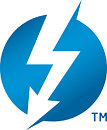
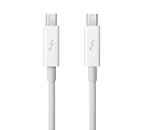
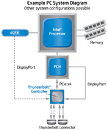
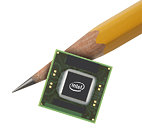
PCI Express has the flexibility to connect to almost any type of device, and DisplayPort can drive greater than 1080p resolution displays and up to eight channels of audio simultaneously. Thunderbolt technology is compatible with existing DisplayPort displays and adapters. All Thunderbolt technology devices share a common connector, and let individuals simply daisy-chain their devices one after another, connected by electrical or optical cables.
Thunderbolt technology is designed to meet the demands of serious HD media creators. For example, videographers can unleash their creativity using high-bandwidth audio and video capture/mixing devices, and get both low latency and highly-accurate time synchronization for real-time processing. At 10Gbps, larger media files are transferred faster so there's less time spent waiting to watch and edit videos. Data can be backed up and restored quicker, so there's less waiting for archived content. For mobile PC users, it means having a single connector on their ultra-thin laptop that extends their high-speed media and HD display capabilities at home or in the office. Thunderbolt technology is complementary to other I/O technologies that Intel continues to support.
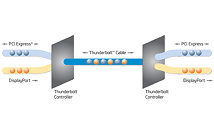
"Working with HD media is one of the most demanding things people do with their PCs," said Mooly Eden, general manager, PC Client Group, Intel. "With Thunderbolt technology, Intel has delivered innovative technology to help professionals and consumers work faster and more easily with their growing collection of media content, from music to HD movies. We've taken the vision of simple, fast transfer of content between PCs and devices, and made it a reality."
"We're thrilled to collaborate with Intel to bring the groundbreaking Thunderbolt technology to Mac users," said Bob Mansfield, Apple's senior vice president of Mac Hardware Engineering. "With ultra-fast transfer speeds, support for high-resolution displays and compatibility with existing I/O technologies, Thunderbolt is a breakthrough for the entire industry and we think developers are going to have a blast with it."
Thunderbolt technology is powered by an Intel controller chip, and uses a small connector suitable for mobile devices that will be included in products supporting the technology. Several innovative companies have announced Thunderbolt technology-based products, or currently plan to support Thunderbolt technology in upcoming products, including Aja, Apogee, Avid, Blackmagic, LaCie, Promise, and Western Digital. Intel is working with the industry on a range of Thunderbolt technology-enabled products including computers, displays, storage devices, audio/video devices, cameras, docking stations and more.
View at TechPowerUp Main Site
The vision for Thunderbolt technology (formerly codenamed "Light Peak") is to move media faster, simplify connections between devices, and foster new and exciting ways to build and use PCs. Combining high-speed data and HD video connections together onto a single cable is instrumental to achieving that vision. Thunderbolt technology delivers this via two communications methods, or protocols -- PCI Express for data transfer and DisplayPort for displays.




PCI Express has the flexibility to connect to almost any type of device, and DisplayPort can drive greater than 1080p resolution displays and up to eight channels of audio simultaneously. Thunderbolt technology is compatible with existing DisplayPort displays and adapters. All Thunderbolt technology devices share a common connector, and let individuals simply daisy-chain their devices one after another, connected by electrical or optical cables.
Thunderbolt technology is designed to meet the demands of serious HD media creators. For example, videographers can unleash their creativity using high-bandwidth audio and video capture/mixing devices, and get both low latency and highly-accurate time synchronization for real-time processing. At 10Gbps, larger media files are transferred faster so there's less time spent waiting to watch and edit videos. Data can be backed up and restored quicker, so there's less waiting for archived content. For mobile PC users, it means having a single connector on their ultra-thin laptop that extends their high-speed media and HD display capabilities at home or in the office. Thunderbolt technology is complementary to other I/O technologies that Intel continues to support.

"Working with HD media is one of the most demanding things people do with their PCs," said Mooly Eden, general manager, PC Client Group, Intel. "With Thunderbolt technology, Intel has delivered innovative technology to help professionals and consumers work faster and more easily with their growing collection of media content, from music to HD movies. We've taken the vision of simple, fast transfer of content between PCs and devices, and made it a reality."
"We're thrilled to collaborate with Intel to bring the groundbreaking Thunderbolt technology to Mac users," said Bob Mansfield, Apple's senior vice president of Mac Hardware Engineering. "With ultra-fast transfer speeds, support for high-resolution displays and compatibility with existing I/O technologies, Thunderbolt is a breakthrough for the entire industry and we think developers are going to have a blast with it."
Thunderbolt technology is powered by an Intel controller chip, and uses a small connector suitable for mobile devices that will be included in products supporting the technology. Several innovative companies have announced Thunderbolt technology-based products, or currently plan to support Thunderbolt technology in upcoming products, including Aja, Apogee, Avid, Blackmagic, LaCie, Promise, and Western Digital. Intel is working with the industry on a range of Thunderbolt technology-enabled products including computers, displays, storage devices, audio/video devices, cameras, docking stations and more.
View at TechPowerUp Main Site








